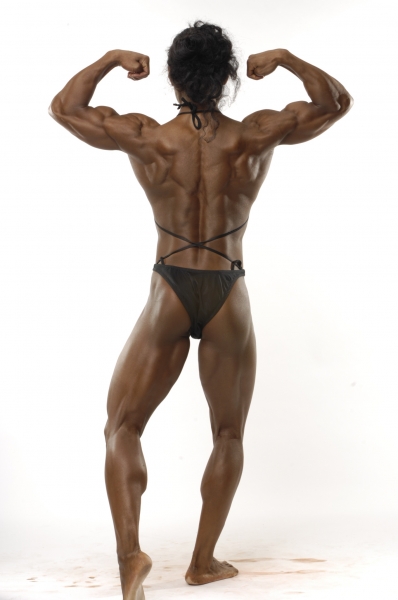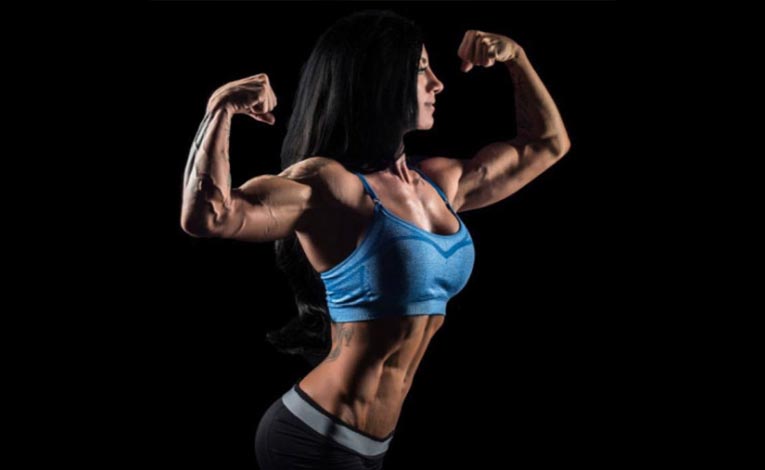
One mistake many bodybuilders make (and exercisers for that matter) is unevenly distributing the muscular development of their body. For example, have you ever seen someone who has a really large upper body but very skinny legs? You may have also seen somebody in the gym who possesses huge arms but a relatively thin rest of the torso.
Like any process, developing muscular balance and symmetry requires a systematic approach and understanding of how the body’s muscles interact on one another. One week or one workout of a muscle or part of the body lagging behind the rest is not going to be enough to catch up. It takes months of consistency to bring everything up to par, into balance, and to make it aesthetically right.
Why Muscular Balance is Important
While aesthetically pleasing, the true importance of muscular balance is strength and injury prevention. Any muscle or part of your body that is smaller or out of proportion from the rest is going to be vulnerable to injuries. You can’t neglect any one area or areas of your body because it isn’t your favorite or you don’t like doing it when exercising and bodybuilding. For example, many rookie bodybuilders become obsessed with getting big arms, but not only can excessively training the arms and neglecting training on other areas of your body like legs or chest create a look of deformity, it can also prevent you from making long term gains in the future.
The reason why this is so is because of something known as “synergistic dominance”. When a muscle in the kinetic chain becomes overly dominant, it can prevent the neural and physical muscular activation of another muscle in which it works simultaneous with in producing a particular movement. When the arms become too big and strong due to over training out if proportion with the rest of the major upper body muscle groups, they will continue to be the dominant muscle working in an exercise movement, say Bench Press or Pull Ups, thus preventing the chest and back muscles from getting the stimulation, activation, and work required to trigger the muscle fiber recruitment necessary to trigger muscle growth. Consequently, in the long term, the arms will remain out if proportion, and the back and chest will only develop very slowly and minimally.
Preventing injuries is another critical reason why creating muscular balance throughout the body is so important. Obviously, an aesthetically underdeveloped muscle is also going to be a weaker muscle. Getting an injury can be one of the biggest setbacks and detriments you can experience, even worse than you’d diet falling off track, because you become sidelined from working hard training while you heal and rehab. Some injuries can have really long term negative effects on your fitness goals, limiting your range of motion or making certain exercises nearly impossible. By creating muscular balance by ensuring all muscles are up to par with one another, you not only generate the symmetry and promotion equality you desire, but you also enable the body to work in a balanced, cohesive unit which in turn ensures maximum strength and functionality.
Proportion and Symmetry
It’s never too late to begin to develop a muscle group that is laughing behind. Even though synergistic dominance can be a hindrance to the rapidity of developing a smaller, weaker muscle, There are ways you can still make the process work.
First, realize that you are out of balance and proportion. Do an assessment. It won’t be hard as there are mirrors all throughout you’d gym. Are your arms too big? Legs too small? Right arm bigger than your left? Back small? Chest not big enough? These are some of the common disproportionate comparisons many bodybuilders and exercisers have. Identify your strengths and your weaknesses.
Next, redesign your weekly workout schedule. If you are doing one muscle twice a week and another one that is smaller or weaker once a week or none at all, then you need to make sure you move your weaker area to twice a week, and drop your strong areas back to once.
In addition, increase the amount of time you spend and the intensity in the weaker muscle. For that muscle, be sure to do at least five sets from various angles on exercises, and be sure to use power movements with challenging and heavier weight. Increasing your weight will increase your intensity. Also, if you have a case of synergistic dominance due to a larger, overactive muscle, you will need to make many if these exercises “isolation” exercises to prevent the dominant muscles from overworking and enabling the muscle fiber stimulation from the smaller, weaker muscle to occur. For example, if you had big arms and a small chest, rely heavily on Cable Crossover work, Dumbbell Flyes, and the Fly Rack while still keeping the bench presses of all three forms (Flat, incline, decline) in your workout.
Consistently remain on and execute this new formation of your scheduling for many weeks until the smaller muscle can begin to fully develop and reach its’ peak and potential. If a bigger muscle is extraordinarily large in proportion to the rest, you may want to forego the training on that muscle for several weeks. It might deflate or lose some relative mass, but this is necessary to bring your weak and small muscles up to its’ level for maximal proportion and aesthetic appearance. Even though this may be difficult, especially if you really love training a muscle group, it is part of the discipline and strict mentality necessary to become elite and reach your potential.
Finally, make sure your diet and protein intake are on track after your weak muscle training to trigger the hypertrophy and muscle fiber growth necessary for the strength and mass gains. Cut down your cardio on that day and the day after too as your body can use these valuable calories and thus energy for the anabolic process.
More on Symmetry
Symmetry works similarly to proportion. While proportion deals with mass balancing, symmetry deals with the mirror image of how your body looks if folded over. For example, when facing a mirror head on, you may notice that one half of your body is not in uniformity with the other half. It, too, can be out of balance. Your right limb can be bigger or wider than your left or your right torso half can be a little more developed than your left.
Of course, the only way to see this clearly would be if you already were in great condition, had an excellent body fat %, and already had developed some mass and definition. Along with proportion, symmetry us the thing all bodybuilders are going for. It can only be fully obtained when enough mass has been added, layered, and then chiseled.
Like proportion improvements, symmetry improvements can be made by adjusting your program, but most symmetry improvements will occur naturally with repeated use of compound movements, such as bench press, rows, and leg presses. Really the key to the aesthetic symmetrical appearance you physically strive for comes down to visualization of the body you want, and then executing your workouts and regimen in congruence with that. Keep in mind that the keys to coming off symmetrically are: developed pecs, rounded, developed delts, shredded arms, and ripped abs. Consistency when training and consistency of intensity equally distributed throughout each and every muscle is paramount, as is the case with proportion from day one.
Conclusion
As you can see, training the body properly to avoid injury and achieve the body and appearance you desire full of balanced strength, proportion, and symmetry requires a clear understanding of how the muscles of the body work and interact, your strengths and weaknesses, a strategy to follow to get you there, and a strong commitment and dedication to the principles of the all important process. By developing the muscles if your body in proportion with symmetrical adherence, you will be able to achieve and maintain the strength, functionality, and maximum aesthetic appearance that all great bodybuilders and fitness champions have.
Courtesy of: Examiner.com
